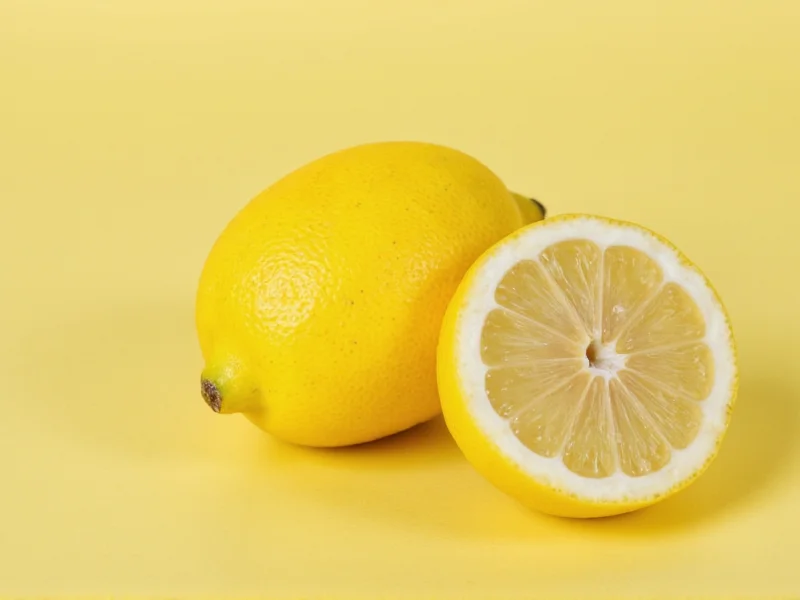Understanding what zest the lemon means is essential for home cooks and professional chefs alike. The vibrant yellow outer skin of a lemon contains essential oils that deliver concentrated citrus flavor far more potent than lemon juice alone. Unlike the juice, which provides liquid and acidity, zest contributes aromatic compounds that enhance both sweet and savory dishes without altering texture.
What Exactly Is Lemon Zest?
Lemon zest specifically refers to the outer 0.5 millimeters of the lemon's peel, scientifically known as the flavedo. This thin layer houses thousands of oil glands containing limonene and other volatile compounds responsible for lemon's distinctive aroma and flavor. The white layer beneath (called the pith or albedo) is bitter and should never be included when zesting a lemon properly.
Why Recipes Call for Lemon Zest
Chefs and bakers specify what does zest the lemon mean in recipes because zest provides:
- Intense citrus flavor without added liquid
- Aromatic complexity that juice cannot replicate
- Bright flavor notes that withstand cooking temperatures better than juice
- Visual appeal with vibrant yellow flecks
When you zest a lemon for baking, you're incorporating these essential oils directly into your batter or dough, creating a more nuanced citrus experience than simply adding juice would provide.
How to Zest a Lemon: Proper Technique
The correct technique for how to zest a lemon properly involves:
- Washing the lemon thoroughly to remove any wax or pesticides
- Drying the lemon completely
- Using a zesting tool to remove only the colored portion
- Rotating the lemon as you work to avoid the bitter white pith
- Using immediately for maximum flavor impact
| Zesting Tool | Best For | Pros | Cons |
|---|---|---|---|
| Microplane Grater | Most applications | Fine, fluffy zest; easy to use; minimal pith | Can create very fine pieces that disappear in some dishes |
| Channel Knife | Garnishes, cocktails | Creates decorative ribbons; precise control | Time-consuming; not ideal for large quantities |
| Citrus Zester | Traditional cooking | Good for small amounts; classic tool | Can be difficult to clean; may pull pith |
| Vegetable Peeler | Larger applications | Quick for large quantities | Requires careful removal of pith afterward |
Common Mistakes When Zesting Citrus
Avoid these errors when you zest the lemon for recipes:
- Removing too much pith - This introduces bitterness that can ruin your dish
- Using non-organic lemons - Conventional lemons often have wax and pesticides on the peel
- Zesting from refrigerated lemons - Cold fruit makes zesting more difficult and less efficient
- Storing zest improperly - Fresh zest loses potency quickly without proper storage
Practical Uses of Lemon Zest in Cooking
Understanding what part of lemon is zest opens up numerous culinary applications:
- Baking - Enhances cakes, cookies, and scones with bright citrus notes
- Savory dishes - Adds complexity to fish, chicken, and vegetable preparations
- Sauces and dressings - Provides depth without additional liquid
- Cocktails - Creates aromatic garnishes for drinks
- Preserves - Boosts flavor in marmalades and jams
How to Store Lemon Zest
If you need to store lemon zest for later use:
- Spread zest in a single layer on parchment paper
- Freeze until solid (about 1 hour)
- Transfer to an airtight container or freezer bag
- Label with date (best used within 6 months)
Alternatively, mix zest with a small amount of oil or liquid from your recipe to create a paste that can be frozen in ice cube trays for convenient portioning.
Lemon Zest Substitutions
When fresh lemons aren't available, consider these alternatives for what does zest the lemon mean in your recipe:
- Dried lemon zest (use 1/2 teaspoon for each teaspoon of fresh)
- Lemon extract (1/4 teaspoon for each teaspoon of zest)
- Bottled lemon oil (1-2 drops per teaspoon of zest)
- Lime or orange zest (for different citrus profiles)
Remember that substitutes won't provide identical results, as fresh zest contains volatile compounds that degrade quickly once extracted from the fruit.
Why Zest Outperforms Juice in Many Applications
The key difference between lemon zest and lemon juice lies in their chemical composition. Zest contains the oil-soluble flavor compounds that provide aromatic complexity, while juice delivers water-soluble acids and sugars. In applications where you want intense citrus flavor without additional moisture (like in shortbread cookies or dry spice rubs), zest is indispensable.











 浙公网安备
33010002000092号
浙公网安备
33010002000092号 浙B2-20120091-4
浙B2-20120091-4